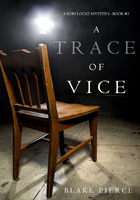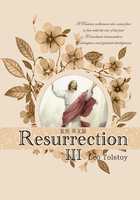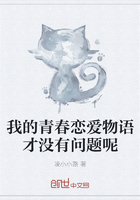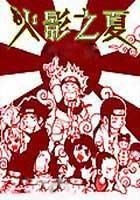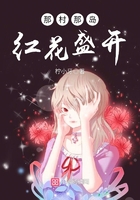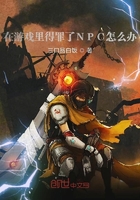This book is written to support those who care for the well-being of their community. It is for anyone who wants to be part of creating an organization, neighborhood, city, or country that works for all, and who has the faith and the energy to create such a place.
I am one of those people. Whenever I am in a neighborhood or small town and see empty storefronts, watch people floating aimlessly on the sidewalks during school or working hours, visit somewhere that seems like a hard place to raise a child or grow old, I am distressed and anguished. It has become impossible for me to ignore the fact that the world we are creating does not work well for all and increasingly does not work for most.
Along with this distress comes the knowledge that each of us, myself included, is participating in creating this world. If it is true that we are creating this world, then each of us has the power to heal its woundedness. This is not about guilt; it is about accountability. Citizens, in our capacity to come together and choose to be accountable, are our best shot at making a difference. This is true whether you want to improve conditions inside an organization or advance a cause or profession that you believe in, or are engaged in making your neighborhood or city a better place for all who live there.
To act on whatever our intentions might be to make the world better requires something more than individual action. It requires, in almost every case, people who may have little connection with each other, or who may even be on opposite sides of a question, to decide to come together for some common good. The need and the methodology to make this happen simply and quickly are what this book is about.
This truth has become clear in the wide range of unexpected invitations I have received since the book was originally published in 2006. I have been invited to a water scarcity conference in Calgary, Canada. I know nothing about water conservation; in fact, I am one of those people who leaves the water running while brushing my teeth. Companies have asked for help in building a community of mothers who purchase a certain diaper for their children. Ken Jaray was running for mayor of Manitou Springs and wanted to talk about using the community ideas both to run a campaign and to govern when elected. The faith community has repeatedly invited me into a discussion of ways to bring people together to begin a church where none exists and to explore ways to help existing churches more fully engage in the community and not rely on people finding meaning inside the church building. A university concerned about the safety of its students used the community-building ideas to engage its neighbors in taking collective action to make the neighborhood safer. Some cities, such as Colorado Springs, Colorado, even had several hundred groups use this book for their citywide book club with the intent of building a more connected community.
This tells me that the need for the experience of community, which is the collective capacity of citizens to make a difference, has only intensified. Even with all the means available to connect with each other, we live and function in ways that keep us isolated. Without new ways to come together, this isolation will persist.
Whatever it is you care about, to make the difference that you seek requires a group of people to learn to trust each other and choose to cooperate for a larger purpose.
The Second Edition
Steve Piersanti, my friend and publisher, called to suggest we put out another edition of this book. These invitations always make me nervous. I get nervous because I wonder if I have anything significant to add. After going through the book again, I chose to create another edition for three reasons. First, with nine years' experience putting its ideas into practice in my home city of Cincinnati, I can be clearer in expressing them. I have put more emphasis on what works, and extracted those thoughts that were nice, but had no durability. The fresh focus in this edition includes updating prior examples and adding a few new ones.
Second, there is growing interest in building community. Call it culture change in organizations, civic engagement in government, neighborhood building in the social sector, outreach in religion, or democracy in the larger society, there seems to be more and more awareness of the need to create places of belonging.
The third reason for developing a new edition is just my frustration and pain in seeing what is occurring in the world. Community building now seems to be an idea whose time has come. Its promise, though, is not well implemented. We still do a poor job of bringing people together. At best we convene a social event, a block party, or a reception, with food and music. All good things to do, but people most often huddle with like-minded people, and strangers remain strangers.
In the midst of the growing awareness of and innovation in thinking about the need to build community, the dominant practices for how to engage people, civically and organizationally, remain essentially unchanged. We still hold town meetings where one person talks and the rest ask vetted questions. City councils still sit on a platform with microphones and give citizens two minutes each to make their point. Too many gatherings still use PowerPoints for clarity and efficiency. Professional conferences continue to be designed around inspiring keynote speeches and content-filled workshops to attract attendees. Presenting data in this way becomes a weak substitute for learning and education.
Here is one example where the intention was mismatched with the design of the engagement process: In the face of growing poverty, a major city brought together the leaders from business, city government, social service institutions, and neighborhoods to form a task force to reduce poverty. The issue could have been any concern anywhere: education, health, safety, economic growth. In this case it was poverty. Great intention.
The strategy, however, was to follow the same predictable process that has not worked time and time again: First, a high-level steering committee was formed. Next, a sizeable amount of money was committed. Third, an expert outside research group was paid to analyze the problem. The group's findings were predictable: poverty is indeed a problem. This then led to setting bold goals and creating blueprints for actions, with timetables, milestones, and measures. This classic problem-solving approach basically called for trying harder at all the things that had been done for years. More mentoring of youth, better school achievement, more job training, greater commitment of large companies to hire more people from poverty neighborhoods. All useful, but nothing in the process raised awareness that poverty is basically a problem of economic isolation. Poverty is not just about the money; it is about the absence of possibility due to our isolation across economic classes, between elite and marginalized neighborhoods, between schools and their neighborhoods, between the elderly and young people. If this isolation, which is the breakdown of community, does not hold center stage, then nothing important will shift. Well-intentioned leaders and citizens, without the consciousness and the tools to produce authentic community, will simply be left with more programs, more funding, and eventually another study to analyze progress.
The option, with respect to poverty, is to realize that people living in economic isolation have skills, wisdom, capacities, and productive entrepreneurial energy. They have assets we don't see when we view them as problems to be analyzed, measured, and fixed. They don't need more schooling, services, and programs. They need access and relatedness to the wider community. They need to be seen as citizens worthy of investment capital and loans. They need partnerships with people and institutions across class and geographical boundaries. They require real partnerships, not mentors. There must be relatedness and trust where both sides give and receive. Building this kind of community is central to a strategy to create conditions where real transformation occurs. This is what is working in a few special places. This is the point being made in this book.
Shifting this consciousness and clarifying the tools are what this revised edition is about. To summarize, the following is what I have tried to emphasize in this edition:
Isolation is on the rise. This book is about the reconciliation or restoration of the experience of community. It offers ways of thinking and practice to return to a sense of belonging that this mobile, modernist, novelty-seeking culture lacks. It is clear that the isolation in our institutions, cities, and larger world seems to be increasing rather than decreasing. The extremism and rigid ideology that flood all forms of public conversation are painful to witness and, to my mind, partial determinants of the violence that surrounds us. Although social media promises to connect us, we still sit in Starbucks, walk down the street, and dine together staring at a flat screen. To restore our connectedness, we need to see clearly the isolation we are part of and to not be taken in by the myth of communal progress.
Interest and practice in restoring community are increasing. This trend goes under the name of civic engagement, community building, organizational outreach, community relations, democracy projects, cooperative movements—all caring for the well-being of the whole. A small example of interest in engagement is that communities and organizations have been selecting Community to share in local book clubs.
Institutional awareness of the need for community is growing. The not-so-obvious insight is that restoring community is increasingly seen as a productive strategy to address business and civic concerns. What is important, and new, is that our traditional institutions, such as the church, are moving their attention and faith efforts outside their buildings and into their neighborhoods. Places of congregation are now in taverns, common houses, and storefronts.
Rabbis and pastors are leading the community-building movement in forms such as the Parish Collective based in Seattle and the Hive and Just Love in Cincinnati.
The city government of Edmonton, Alberta, Canada, is sponsoring an Abundant Community Initiative, which supports neighbors in identifying and gathering together the gifts of people on their block in projects aimed at producing more safety and revitalization.
The Rochester Health Foundation has an eight-year strategy to reduce major illnesses in the community by organizing residents in vulnerable neighborhoods to make their place better, addressing concerns that would seem to have nothing to do with major diseases. They are investing in such projects as beautification, community gardens, fixing up distressed buildings, and pushing drug traffic out. What does having residents care for their six-block area have to do with fighting cancer, diabetes, and heart disease? There is evidence that some of the major determinants of disease are social, relational, and communal.
When we have serious structural innovation in community engagement on the part of the church, the government, and foundations, something important is going on.
One more motivation for revising the book is to confront the reality that even when social pioneers do amazing work and manage to bring people together to make a place better, their work remains an untold story. It competes poorly for all the attention drawn to crisis. Building trust, relationships, and social capital as a strategy for improving health, well-being, and safety and for raising productive children does not make a lot of money for anybody and does not feed the media's—social media included—appetite for drama and entertainment. What works in the world, as opposed to what is failing in the world, still gets treated as a human interest story.
All the more reason to keep clarifying why building community and belonging is going to be our most powerful strategy for ending the displacement and isolation that plagues so many aspects of our world. Building community is also a powerful strategy for creating resilient organizations, a healthier planet, and safer streets. The purpose of this book is to put the capacity to do this in the hands of citizens, supported, as a backup in the end, by the usual solutions of designing programs, making blueprints, getting funding, and trying all the things that institutions do.
The challenge in this enterprise is that building community seems too simple. If you choose to shift toward a context of possibility instead of staying with a context of deficiency, and you follow the questions and protocols outlined in part 2, you will discover how simple it is to end people's isolation. When you reduce people's isolation, they learn that they are not crazy and that there is nothing wrong with them. To this end, here is a preview of how I approached this edition:
?I have included more examples of how a shift to community building may be more powerful than traditional problem solving and programs. How we approach the persistence of the poverty scenario I describe here is one example. Interspersed throughout the text are more instances where social capital, the product of building community, is decisive in creating economic reform where it is most needed.
?In addition to amplifying the need for community and belonging, I show how really simple building community can be, once we decide it is essential. Overcoming isolation and creating belonging does not take a long time. Like yoga, it is about attention and practice and the mat you are on in the moment. It is not about the particular people and their agility or body shape, nor does it take years of effort. The structure of belonging is simply about getting the room right, forming small groups, getting the questions right, and putting a lid on our desire to rescue, fix, and train.
?I have repurposed the last part of the book to make it a more useful tool for readers to refresh their knowledge of key concepts, reflect on why these ideas are so elusive in our lives, and think about what they might mean if applied in everyday situations. I have also taken the long list of role models and resources out of the book and placed them on the abundantcommunity.com website.
The Importance of Belonging
In making all these changes, I have accentuated the major point of the book: that the strong cultural imperative of individualism and the belief that science and technology will solve the problems of climate, corporate productivity, school performance, customer satisfaction, and immortality will only increase the violence, poverty, and unnecessary suffering that we are confronted with every day. Community and its structure of belonging does something about this.
The word belong has two meanings. First and foremost, to belong is to be related to and a part of something. It is membership, the experience of being at home in the broadest sense of the phrase. Belonging is best created when we join with other people in producing something that makes a place better. It is the opposite of thinking I must do it on my own. That wherever I am, it is all on my shoulders and that perhaps I would be better off somewhere else. The opposite of belonging is to feel isolated and always (all ways) on the margin, an outsider. I am still forever wandering, looking for that place where I belong. To belong is to know, even in the middle of the night, that I am among friends.
Our purpose in exploring the concepts and methods of community building is to increase the amount of belonging or relatedness that exists in the world. We do this partly out of a desire for good, but primarily because if we want to fill those empty storefronts, raise our children, and engage those wandering on the sidewalks during the day, building community is a precondition for those changes to occur. Experiencing the kind of friendship, hospitality, and conviviality that constitutes community is not easy or natural in the world we now live in, and that is why the storefronts stay empty, the children stay challenged, and suffering stays around us.
The second meaning of the word belong has to do with being an owner: something belongs to me. To belong to a community is to act as a creator and co-owner of that community. What I consider mine I will build and nurture. The work, then, is to seek in our communities a wider and deeper sense of emotional ownership and communal ownership. It means fostering among all of a community's citizens a sense of ownership and accountability, both in their relationships and in what they actually control.
Belonging can also be thought of as a longing to be. Being is our capacity to find our deeper purpose in all that we do. It is the capacity to be present and to discover our authenticity and whole selves. This is often thought of as an individual capacity, but it is also a community capacity. Community is the container within which our longing to be is fulfilled. Without the connectedness of a community, we will continue to choose not to be. I have always been touched by the term beloved community. This is often expressed in a spiritual context, but it also is possible in the secular aspects of our everyday life.
My intent in this book is to give definition to ways of structuring the experience of belonging—that's why the first noun in its subtitle is structure. Belonging does not have to be left to chance or to be dependent on the welcoming nature of others.
My thinking about structure has been shaped by a quote from a wonderful periodical devoted to art and architecture called The Structurist:
The word structure means to build, to construct, to form, as well as the organization or morphology of the elements involved in the process. It can be seen as the embodiment of creation . . . a quest not only for form but also for purpose, direction and continuity.
This quote refers to art, and we can apply the same thoughts to community. The promise of what follows in this book is to provide structural ways to create the experience of belonging, not only in places where people come just to be together socially but especially in places where we least expect it. These include all the places where people come together to get something done—our meetings, dialogues, conferences, planning processes—all those gatherings where we assemble to reflect on and decide the kind of future we want for ourselves.
I especially like the word structure because it stands in relief to our concern about style. To offer structures with the promise of creating community gives leaders relief from the common story that leadership is a set of personal qualities we are born with, develop, or try on like a new suit to see if they fit. The structures in this book—both the thinking and the practices—can be chosen and implemented regardless of personal style, or lack thereof. We can create structures of belonging even if we are introverted and do not like to make eye contact.
A word about the structure of the book. I have included a summary of each chapter at its beginning. I got the idea from Christopher Alexander's Timeless Way of Building. There he said that if you do not want to read the whole book or a whole chapter, just read the summaries and you will get the point. Also, the main points are summarized in outline form at the end, so if you do not want to read the chapter summaries or the text, you can go to the last section of the book and really save some time.


